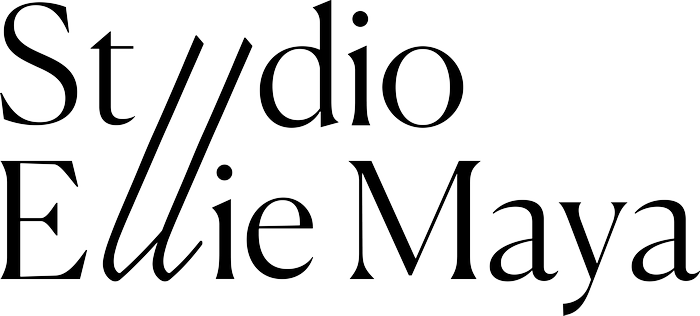Mackenzie Willis: Making as a Healing Process
Studio Ellie Maya invites you to join a series of conversations with our selected makers. This is an opportunity to delve deeper into their practice, process and materials.
I’m delighted to be working with the talented maker, Mackenzie Willis. I initially discovered Mackenzie’s work at her graduate showcase and was immediately captured by her series of objects. The fragmented finds appeared so beautifully and meticulously balanced, yet spontaneous in their arrangement. By collecting hundreds of mudlarked materials, Mackenzie manifests objects that employ emotionally charged shapes, making sense of the intangible connection that found objects give us.
Mackenzie Willis, Wave, 2022
Ellie Isaacs: What does the term ‘mudlarking’ mean to you within the wider context of your practice?
Mackenzie Willis: This is an extremely dynamic question for me and I feel my answer will be ever-changing. I came to mudlarking at a very vulnerable time in my life; I had moved to a new city at the end of the pandemic and felt extremely isolated. I was attracted to mudlarking as a repetitive, therapeutic and exploratory act. I was also intrigued at its accessibility as an arguably free activity (yes, I am aware you are supposed to have a “license” to mudlark, but I also think it’s insane to gatekeep garbage picking, especially considering the historical context of mudlarking as an occupation). Mudlarking not only became a space for me to enact self-therapy and collect materials, but also a place where I could make fleeting connections with other mudlarks or meaningfully connect with newly found friends who were eager to tag along for the hunt.
EI: Is the process of making inherently reflective for you?
MW: Making is absolutely reflective for me, that being said, I wasn’t able to use this to my advantage until more recently. In the 2nd unit of my MA I came to identify the context of my practice: An Autoethnographic exploration of Making as a Healing Process. The methodology of this work includes facilitating mudlarking outings, creating workshops and intuitively making my own objects. As someone who has always lived with panic and anxiety, it’s commonplace for me to overcomplicate the world in front of me. To challenge this behaviour, I took it upon myself to think about my fragility in simple terms. Ultimately the process of inner reflection became essential in both an act of self-therapy and the realisation of my work.
Mackenzie Willis, Net, 2022
EI: What does the process of creation look like to you, both on a technical and material level?
MW: The process of creation for me is in all respects chaotic-good, emotional and non-linear. I would say that a lot of my process relies on unconscious and tacit knowledge and because of this I am in a constant state of rigorous self-reflection. For me, the process of making the objects is an act of self-inflicted Cognitive Behavioural Therapy (CBT). It requires a total release of control and is often extremely frustrating. During the making process, the materials work autonomously to decide the end form. Unlike Kintsugi or other ceramic methods of repair, these ceramic objects are not from the same mother object and are often made up of entirely different materials from different periods in history- therefore they are not attuned to one another. It’s often a game of balance, luck and extreme patience to amalgamate an object.
EI: What is your relationship to the found materials that you collect? Does their role alter when they are combined?
MW: I feel that my excitement (or other felt emotions) towards the materials don’t necessarily change throughout the process but it does feel new at each stage. The aftermath of mudlarking, where I clean the materials is always a process of rediscovery.
The materials I work with are often viewed as historical fragments belonging to a point in time. I do not view them this way in my practice. Instead I think about the memories, hands and people attached to these objects and my ability to work in partnership with them and their individualised identities.
Mudlarking process
EI: What is your favourite found object or mudlarked item that you have discovered?
MW: It’s odd but I don’t think I have a favourite. That being said, I do have a small collection of pieces that I don’t currently plan on using in my work. I use them as mnemonic devices to reflect on how I was feeling when I collected them. I have several pipe pieces that have certain letters or names engraved in them, some ceramic shards with particular makers marks or textures, a Ginger Beer bottle neck and some goat, horse and cow teeth. I also have some shark teeth that I collected beach combing with some friends in Herne Bay.
EI: How has working with mudlarked materials encouraged you to revise your approach to making / how does it influence your approach to sustainability?
MW: I guess you could say that it solidified my methodology of utilising existing materials to make new objects rather than using new materials and high-energy. I feel that this has more to do with my attraction to the act of collecting, processing and connecting with materials that have lived a previous life / purpose rather than the recycling or repairing of the materials.
Sustainability is and has always been embedded within the holistic ethos of my practice, even prior to my time as a mudlarker. My practice has always been inherently political and socially driven and sustainability happens to be a part of that. I often think of a future where we don’t discuss sustainability at all as it will evolve into an embodied part of material processes at large.
For further information or enquiries regarding commissions and creative projects, please email us at: info@studioelliemaya.com



